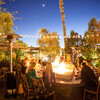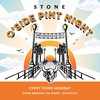Sip back and relax with cool coastal tunes on the Stone Brewing Tap Room patio in downtown Oceanside.
Sip back and relax with cool coastal tunes on the Stone Brewing Tap Room patio in downtown Oceanside.
Sip back and relax with cool coastal tunes on the Stone Brewing Tap Room patio in downtown Oceanside.
Sip back and relax with cool coastal tunes on the Stone Brewing Tap Room patio in downtown Oceanside.
Sip back and relax with cool coastal tunes on the Stone Brewing Tap Room patio in downtown Oceanside.
Sip back and relax with cool coastal tunes on the Stone Brewing Tap Room patio in downtown Oceanside.
Sip back and relax with cool coastal tunes on the Stone Brewing Tap Room patio in downtown Oceanside.
Sip back and relax with cool coastal tunes on the Stone Brewing Tap Room patio in downtown Oceanside.
Every third Monday, keep the pint when you order a select pint for just $6. Exclusive Oceanside-themed pints are only available on our monthly Pint Nights. Limit one glass per person; $6 refills available.
We appreciate your interest in writing about Stone Brewing. If you have any questions you'd like answered, artwork needed for your article, interview requests or other media inquiries - please email us.#block-views-proper-names-all-beers-block-1 {
background-color: #080808;
z-index: 1;
position: relative;
}
#…

